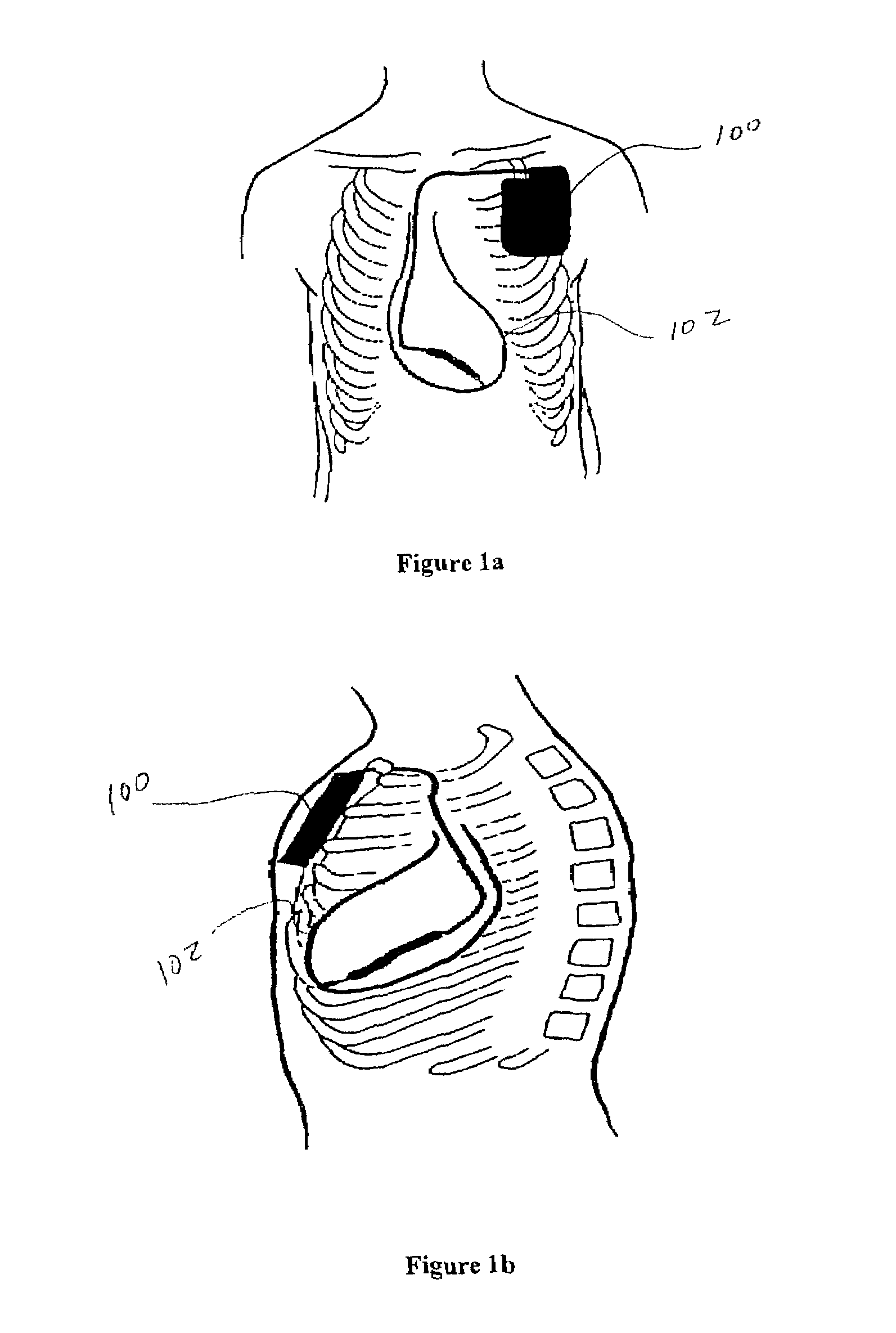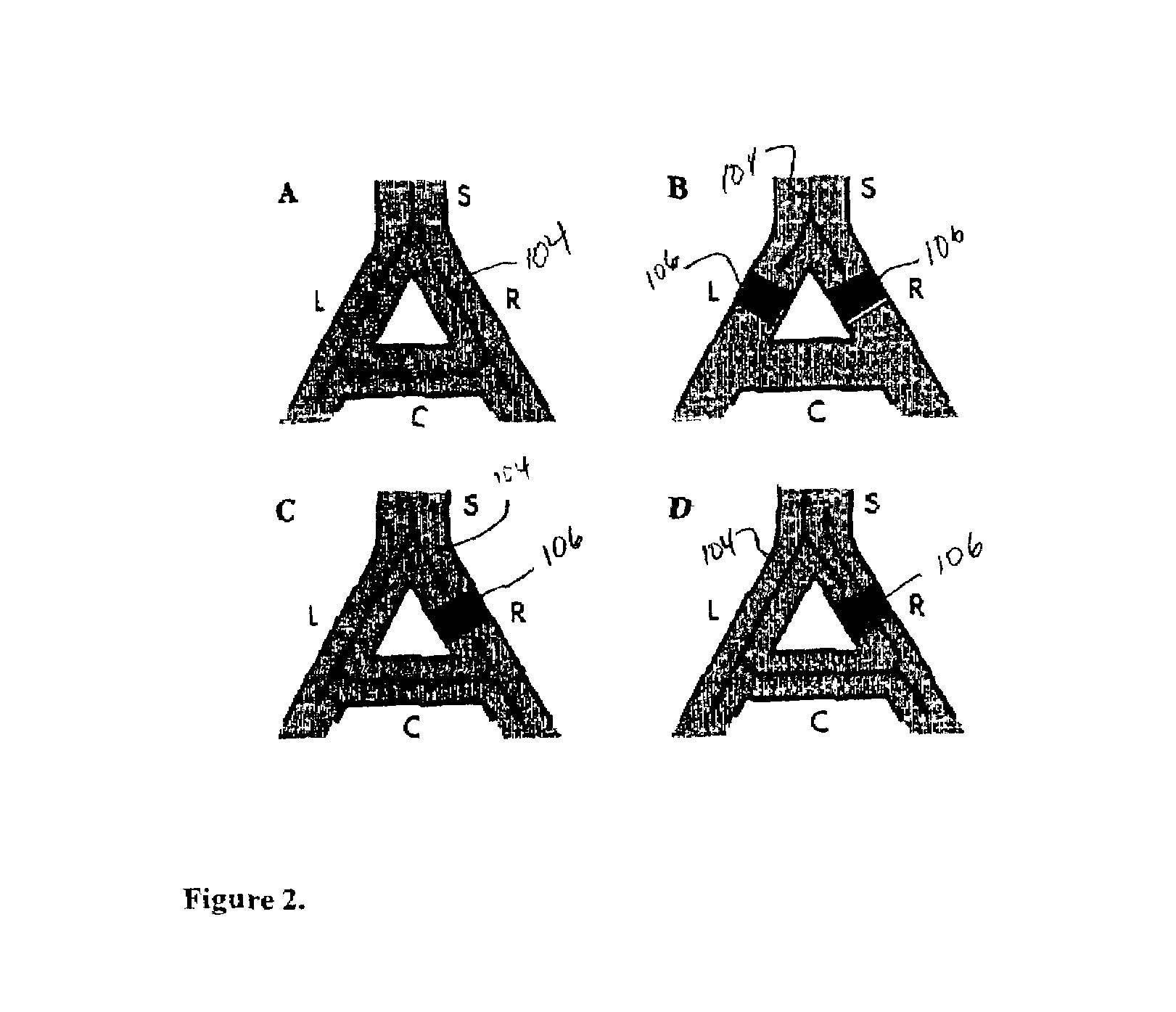Method of and apparatus for tachycardia detection and treatment
a tachycardia and tachycardia technology, applied in the field of tachycardia detection and treatment, can solve the problems of prolonged suffering and disability in a larger number, difficult treatment, and significant reduction of the population without warning, so as to reduce the likelihood of heart rhythm disturbance and prevent heart rhythm disturban
- Summary
- Abstract
- Description
- Claims
- Application Information
AI Technical Summary
Benefits of technology
Problems solved by technology
Method used
Image
Examples
Embodiment Construction
[0037]Preferred embodiments of the invention will now be described with reference to the accompanying figures.
[0038]A preferred embodiment for this invention involves an apparatus for and method of preventing heart rhythm disturbances that involves detecting (and optionally recording) cardiac electrical activity from electrodes placed in or on the patient's body proximate the patient's heart. The cardiac electrical activity is monitored and beat-to-beat variability in the cardiac electrical activity is measured. A variety of algorithms have been described in the art for measuring variability, including several co-developed by the applicants and described in the following references, which, like all the articles mention in this application, are incorporated herein by reference: Rosenbaum, D S, et al., “Electrical alternans and vulnerability to ventricular arrhythmias”, N Engl J Med. 1994;3 30:235-41; Adam, D R, et al., “Fluctuations in T-wave morphology and susceptibility to ventricu...
PUM
 Login to View More
Login to View More Abstract
Description
Claims
Application Information
 Login to View More
Login to View More - R&D
- Intellectual Property
- Life Sciences
- Materials
- Tech Scout
- Unparalleled Data Quality
- Higher Quality Content
- 60% Fewer Hallucinations
Browse by: Latest US Patents, China's latest patents, Technical Efficacy Thesaurus, Application Domain, Technology Topic, Popular Technical Reports.
© 2025 PatSnap. All rights reserved.Legal|Privacy policy|Modern Slavery Act Transparency Statement|Sitemap|About US| Contact US: help@patsnap.com



